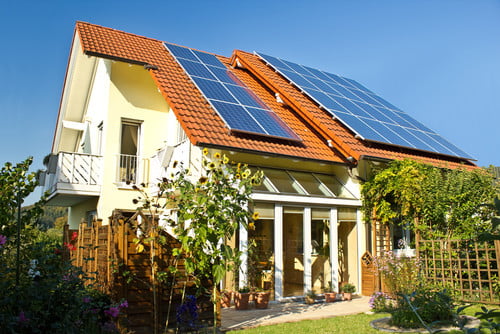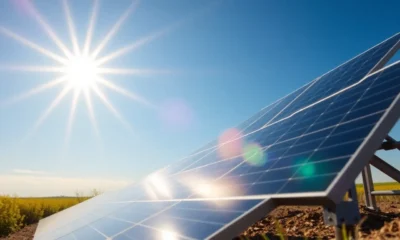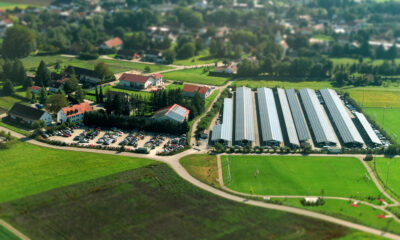

Energy
Key Things To Know When Building A Solar-Powered Home
Proper planning saves you cost and time when building your home. It is wise to do adequate preparation when building especially for a solar-powered home. Why? Though these houses are no different from other houses, there are a couple of things you need to have in mind. For example, the roof of a solar-powered home will need to be strong enough to sustain the weight of this system. Also, you may build a house anywhere even under shade, but not a solar-powered home because solar will need exposure to sunlight.
So, before you start building your solar-powered home, consider the following; the amount of energy needed in your home, rain-water collection point, and the type and shape of your roof. Keep reading to know more.
1. How Much Energy Do You Need?
The size of the house you are building will determine the amount of light you will need. The bigger the home, the more the energy you’ll need. Again, the number of electrical appliances you will use also determine the amount of power you will need. You can try to estimate, depending on the amount of power you have been using in the past, how much energy you will need to power up your new home. That helps you know the kind of system you will need in your home.
2. Rain-Water Collection Point
Where you set up your solar system on the roof will affect the flow of rain-water. If your purpose is to depend on rain-water, then you need to be sure where you will have the solar system. If your tank will be on the front side, you can consider having the solar system on the back side of your home so that the water can run to the tank through the front side gutters.
Also, decide where the wire harnesses and ranking equipment will run through so as to ensure that water runs smoothly.
3. Roof Type
Not all roofs are suitable for solar installation. That is why; you need to be careful about the kind of roof you install. Though most roofs support solar system, some will cost you way more than when you could have used others. When you use a roof that doesn’t support the solar system, you will definitely spend more since you’ll need to hire an expert who knows how to install the system on such roofs.
If you are not sure if the roof you want to use will support the solar system, it is good to consult the manufacturers of the system or seek advice from experts such as Btrendie.
4. Shape of Roof
Not all roof shapes support solar systems. Some shapes will deny the system the amount of space it requires for it to work effectively. Therefore, when building your house, ensure that the shape and size of your roof give enough space for the system.
Also, consider if you will use a chimney in your new home. If yes, then, you will need even a bigger roof because the chimney and the system should not come near each another.
5. Access to Direct Sunlight
When building your house, consider if the roof is fully exposed to the sunlight. You see, the solar system depends entirely on sunlight and the amount of sunlight that reaches it determines the amount of energy you get. That has direct impacts on the amount of light you will be able to use in your house.
So, ensure that you build your house away from shades so that it can have good access to direct sunlight.
6. The Weight of The Solar System
During construction, ensure that your roof is strong enough. Why? The solar system comes with some considerable weight. That is why; you need to have a stable roof that can support its weight. Otherwise, if you build a weak roof, the house may collapse.
So, ensure that the contractor is aware that you’ll use a solar system to power up your house so that they can build a roof that’s strong enough to accommodate that weight.
Conclusion
No one wants to build a solar-powered home and then realize that his home cannot support solar system. On the other hand, building one and then realize that there is not enough light in your house because there isn’t enough sun reaching the system is even more frustrating. Plan before you start building so that you will not incur a double cost.


 Environment10 months ago
Environment10 months agoAre Polymer Banknotes: an Eco-Friendly Trend or a Groundswell?

 Environment11 months ago
Environment11 months agoEco-Friendly Home Improvements: Top 7 Upgrades for 2025

 Features8 months ago
Features8 months agoEco-Friendly Cryptocurrencies: Sustainable Investment Choices

 Features10 months ago
Features10 months agoEco-Friendly Crypto Traders Must Find the Right Exchange





























